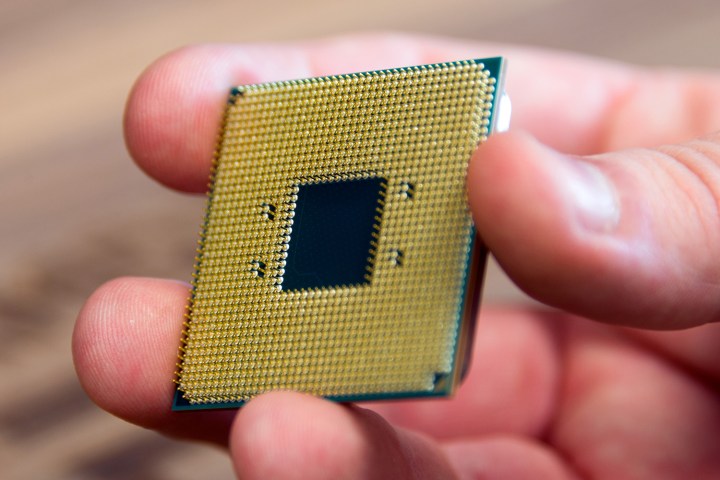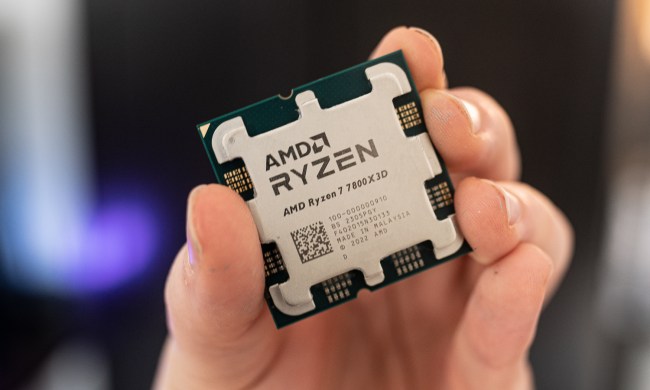
Here is AMD’s new Ryzen 3 lineup:
| Cores | Threads | Base Speed | Boost Speed | Power Draw | Price | |
| 1300X | 4 | 4 | 3.5GHz | 3.7GHz | 65 watts | $129 |
| 1200 | 4 | 4 | 3.1GHz | 3.4GHz | 65 watts | $109 |
According to AMD, the Ryzen 3 1300X chip is up to 29 percent faster than Intel’s Core i3-7300 processor in Cinebench. Using a 1080p resolution, it is also around 10 percent faster in Tom Clancy’s The Division (DirectX 12), around 13 percent faster in Overwatch (DirectX 11), and around 11 percent faster in DOTA 2 (DirectX 9). In addition to gaming, the Ryzen 3 1300X supposedly provides better performance in video encoding and content creation when compared to Intel’s chip.
To be fair, Intel’s Core i3-7300 is a dual-core chip, and here are the hardware details:
| Cores | Threads | Base Speed | Boost Speed | Power Draw | Price | |
| i3-7300 | 2 | 4 | 4.00GHz | N/A | 51 watts | $138 to $147 |
In keeping with the comparison theme, AMD is pitting the Ryzen 3 1200 processor against Intel’s Core i3-7100 chip. AMD admits that the competing processor outperforms the Ryzen 3 1200 by around two percent in 1080p gaming. However, according to the company, the Ryzen 3 1200 offers around 17 percent better performance in video encoding, and around 14 percent better performance in content creation.
Here are the hardware details of Intel’s Core i3-7100 processor:
| Cores | Threads | Base Speed | Boost Speed | Power Draw | Price | |
| i3-7100 | 2 | 4 | 3.90MHz | N/A | 51 watts | $117 |
Ultimately, the comparisons focus on AMD’s intent to provide more performance per watt with a cheaper price tag. Although the actual maximum power usage is slightly higher than Intel’s two chips, AMD crammed four cores into its Ryzen 3 lineup with a cheaper price tag. What will be interesting to see is how well Ryzen 3 will compete against Intel’s two processors in benchmarks outside AMD.
Both AMD Ryzen 3 processors fit in the AM4 socket, and support the X370 (enthusiast), B350 (performance), and A320 (mainstream) motherboard chipsets. They will also ship unlocked, enabling PC builders to overclock the chip’s speed unless they’re installed on a motherboard with the A320 chipset, which doesn’t support overclocking. For small form factor PCs, the processors are compatible with the X300 (unlocked) and A300 (locked) chipsets.
Ryzen 3 processors are sold with AMD’s Wraith Stealth fan-based processor cooler promising a low profile and low noise. However, customers will eventually have the option to purchase AMD’s Wraith Max fan-based CPU cooler, which isn’t low profile but includes customizable RGB LED illumination.
Finally, like the Ryzen 7 and Ryzen 5 processors already on the market, the Ryzen 3 models support AMD’s SenseMi technology. This essentially adjusts the power draw to meet the demands of the current workload, adjusts the speed in 25MHz increments when needed, enables clock speeds beyond the Precision Boost limit (depends on the cooling solution), and manages how programs utilize the CPU using built-in artificial intelligence.



